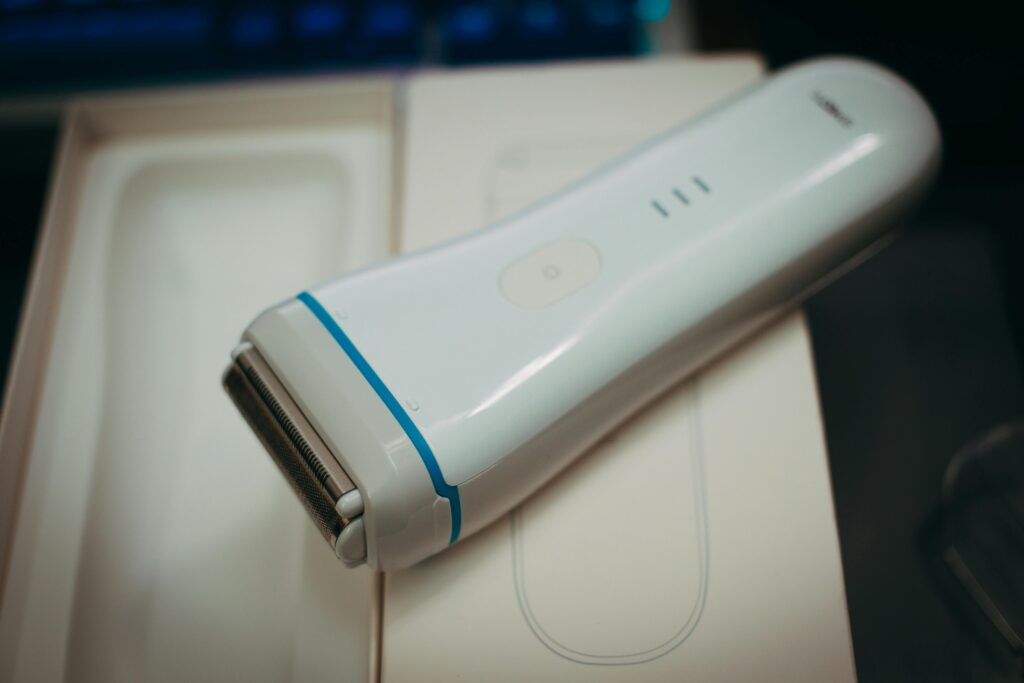Braun Laser Hair Removal Devices: Complete Guide 2025
Introduction Laser hair removal devices (see products on Amazon) have become increasingly popular among people looking for long-term, salon-quality results at home. Among the leading brands, Braun stands out for its innovation, safety, and proven effectiveness. With advanced IPL (Intense Pulsed Light) technology, Braun devices promise smoother skin with lasting results while being gentle enough for at-home use. In this article, we explore the most popular Braun laser hair removal devices in 2025, their features, pros and cons, and tips for choosing the right model for your needs. 1. Why Choose Braun for Laser Hair Removal? Braun has been a trusted name in personal care for decades, known for reliability and German engineering. When it comes to hair removal, Braun’s IPL devices are: Clinically tested and dermatologically accredited by the Skin Health Alliance. Designed with Smart IPL technology that adapts to different skin tones. Fast and efficient, covering both large and small areas. Durable, offering up to 400,000–500,000 flashes, which equals several years of treatments. This combination of safety, technology, and performance makes Braun one of the top choices for at-home hair removal. 2. How Braun IPL Technology Works Unlike traditional laser devices, Braun uses Intense Pulsed Light (IPL). This light targets the melanin in hair follicles, heating them to slow or stop regrowth. Gentle on skin – Braun devices include multiple intensity levels. Skin tone sensor – Ensures the device automatically adjusts to your tone for maximum safety. Precision heads – Special attachments allow you to treat sensitive areas like the face, bikini line, and underarms. Regular use—typically once a week for the first 12 weeks—leads to visibly reduced hair growth. Maintenance sessions once a month help keep skin smooth. 3. Popular Braun Models in 2025 3.1 Braun Silk-expert Pro 5 (Latest Model) Key Features: 400,000–500,000 flashes. SensoAdapt™ skin tone sensor. Multiple intensity modes (normal, gentle, extra gentle). Fast treatment time—both legs in under 10 minutes. Pros: Highly efficient and safe. Long-lasting results with fewer sessions. Trusted by dermatologists. Cons: Higher price compared to competitors. 3.2 Braun Silk-expert Pro 3 Key Features: 300,000 flashes. Three comfort modes. Compact and lightweight. Pros: More affordable than Pro 5. Easy to use for beginners. Cons: Slightly slower results. Not as powerful for very thick hair. 3.3 Braun Silk-expert Mini Key Features: Smaller design, ideal for travel. Up to 250,000 flashes. Fast treatment of small areas. Pros: Budget-friendly. Compact and portable. Cons: Not designed for full-body treatments. Shorter lifespan compared to Pro 5. 4. Advantages of Using Braun Laser Hair Removal Devices Long-term results: Up to 6 months of smooth skin after initial treatment. Time efficiency: Large windows cover more skin per flash. Safe for multiple skin tones thanks to SensoAdapt™ sensor. Pain reduction: Extra gentle mode reduces discomfort for sensitive areas. Cost-effective: Saves money compared to repeated salon sessions. 5. Limitations and Considerations No device is perfect, and it’s important to set realistic expectations: Not effective on very light blonde, grey, or red hair (due to lack of melanin). Not recommended for very dark skin tones (risk of burns). Requires consistent treatments to achieve results. Initial investment may be high compared to other methods like waxing. 6. How to Use Braun IPL Safely at Home Shave before treatment – IPL works best on freshly shaved skin. Clean and dry the area – No lotions or deodorants before use. Choose the right intensity – Let the sensor guide you. Treat weekly – Consistency is key for the first 12 weeks. Apply sunscreen – Avoid sun exposure or tanning immediately before and after treatments. 7. Braun vs Other Brands When comparing Braun with Philips Lumea, Remington, or Silk’n: Strength: Braun often offers stronger flashes per session, speeding up results. Safety: SensoAdapt™ technology sets it apart from many competitors. Price: Braun tends to be more expensive but provides durability and reliability. 8. Maintenance and Device Lifespan No bulb replacements required; flashes last years. Wipe treatment window with a soft cloth after each use. Store in a dry, safe place. Most users report their Braun Pro 5 lasting 5–7 years of regular treatments without issues. 9. Customer Reviews and Feedback Braun IPL devices consistently receive positive ratings: Efficiency: Users notice visible results within 4–6 weeks. Comfort: Gentle mode is praised for being less painful. Ease of use: Compact design and intuitive interface. Common complaints usually involve the high price or the need for consistent use to maintain results. Braun remains one of the best brands for at-home IPL hair removal in 2025. With advanced safety features, high flash counts, and dermatologist approval, Braun devices deliver salon-quality results in the comfort of your home. If you are looking for a reliable, long-lasting, and effective solution to unwanted hair, the Braun Silk-expert Pro 5 is the top choice. For budget-conscious buyers, the Silk-expert Pro 3 and Silk-expert Mini provide excellent alternatives. Investing in a Braun device means smoother skin, more confidence, and freedom from constant shaving or waxing. If you want to learn more about laser hair removal, follow us at bestlaserepilators.com.
Braun Laser Hair Removal Devices: Complete Guide 2025 Leer más »










